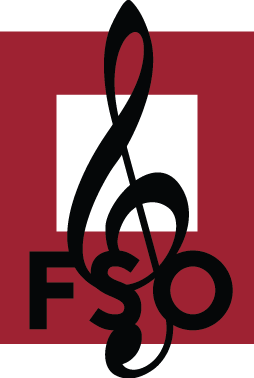
Not to be confused with The ABCs of String Orchestra by Janice Tucker Rhoda, our ABCs detail all of the wonderful qualities that make up classical music. From musical instruments to composers, here’s an alphabetized list of our favorite assets to classical music.
- A: Atonality – In its broadest sense, this is music that lacks a tonal center or key.
- B: Beethoven – One of the most famous composers of all-time, Ludwig van Beethoven graced the world with nine symphonies.
- C: Cello – One of the four instruments in the strong family, the cello’s strings are made animal gut, nylon, or steel.
- D: Da Capo – In sheet music, this is an instruction to repeat the beginning of the piece before stopping on the final chord.
- E: Expressionism – This is a violent musical style used as a means of evoking deep emotions.
- F: Felix Mendelssohn – The Germany native was a composer, organist and pianist.
- G: Glockenspiel – This instrument means, “the hitting of one body against another.”
- H: Hymn – A type of composition for praise or glorification that’s most often in honor of God.
- I: Introduction – This is the opening section of a composition.
- J: Joyful, Joyful We Adore Thee – One of Beethoven’s best pieces, this song is typically used as a church hymn.
- K: Klangfarbenmelodie – This is a technique of altering the tone color of a single note or musical line by changing from one instrument to another in the middle of a note or line.
- L: Leitmotif – First discovered between 1820 and 1910, this is a constantly recurring musical phrase.
- M: Movies – Classical music only makes a motion picture better. Check out some of our favorites here.
- N: Neoclassical – A classical music period where characteristics became crisp and direct.
- O: Opus – A numbering system that composers use to organize their works, such as Opus 28, No. 4.
- P: Pizzicato – This is a playing technique that involves plucking the strings instead of bowing them.
- Q: Quintet – This is a set of five musicians who perform a composition written for five parts.
- R: Renaissance – This period of classical music was during the 15th and 16th centuries.
- S: Song cycle – A song cycle is a sequence of songs, perhaps on a single theme or with texts by one poet, or having continuous narrative.
- T: Tchaikovsky – The composer originally disliked his composition for the wildly popular The Nutcracker.
- U: Unison – This is when two or more voices or instruments are played simultaneously.
- V: Violin – One of the most popular instruments in classical music, 1 in 10 people around the world play the violin.
- W: Wolfgang Amadeus Mozart – The Austrian composer’s most recognized piece is Eine Kleine Nachtmusik.
- X: Xylophone – This instrument is fairly new to classical music, only being used for the past century or so.
- Y: YouTube – Thanks to the influx of technology and social media, classical music has made its way to the Internet on channels like this.
- Z: Zoltán Kodály – This Hungarian composer was also an ethnomusicologist, pedagogue, linguist, and philosopher.
Remember that you can switch out these letters for multiple terms. For example, instead of atonality for ‘A,’ we could put An American Salute, which is the theme for our next concert on June 11 at 7:30 p.m. in Jack B. Kussmaul Theater.
